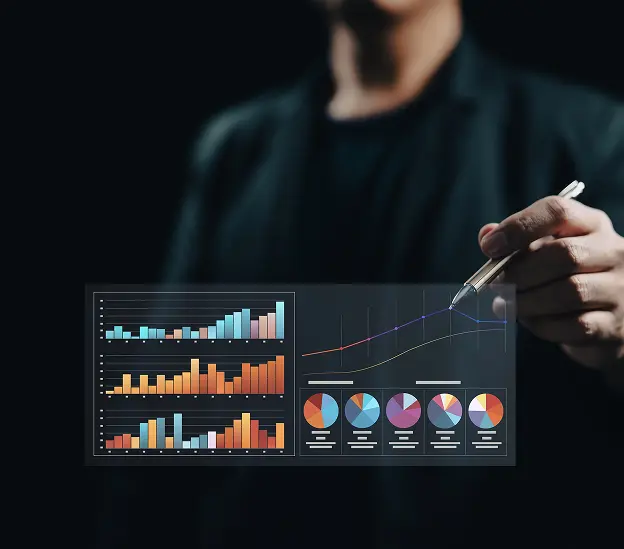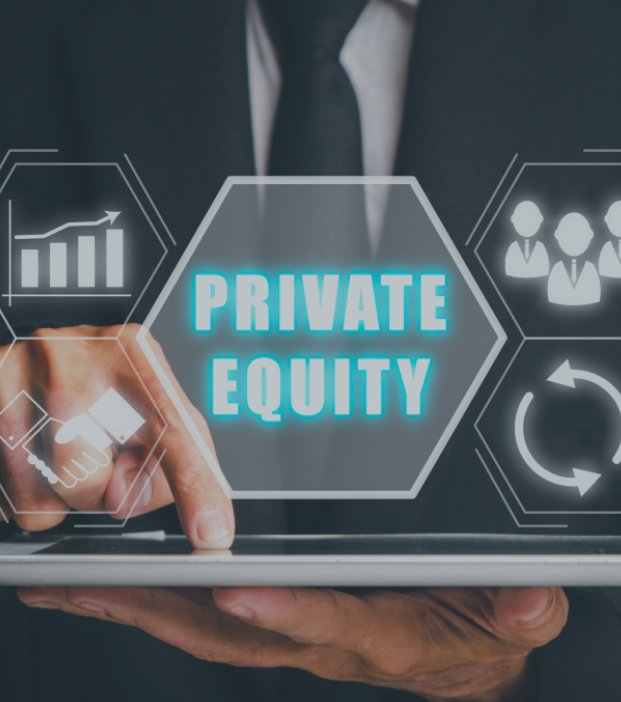In an environment where private equity firms are expected to deliver alpha not just at exit but throughout the holding period, portfolio monitoring has taken center stage. Gone are the days of quarterly check-ins and static spreadsheets. Today’s market demands dynamic, faster insights, with deeper operational intelligence.
Private equity firms today manage increasingly diverse and expansive portfolios, spanning geographies, sectors, and investment structures. Each portfolio company generates a continuous stream of financial, operational, and strategic data, which makes monitoring performance exponentially complex. Traditional methods, often built around spreadsheets, static reports, and quarterly reviews, are no longer agile. The need to capture granular, timely data from each investment is critical.

To manage complexities, firms are turning to automation and AI-driven platforms that deliver real-time insights. Instead of manual processes that are slow, error-prone, and fragmented, automated portfolio monitoring tools offer a unified, always-on view. They can ingest and harmonize data from disparate sources, transforming them into actionable intelligence. This shift isn’t just about efficiency but about building more responsive investment operations, enabling automated portfolio management systems that empower firms to make faster, more informed decisions.

The traditional approach is centered around manual data collection, quarterly updates, and siloed spreadsheets. As limited partners demand transparency, value creation plans require constant validation, and risks must be surfaced before they threaten returns. Enter portfolio monitoring automation: a paradigm shift that brings integrated, intelligent systems capable of tracking, analyzing, and reporting portfolio performance in real time.
Below, we break down what portfolio monitoring automation is and how it differs from traditional approaches.
The use of AI in portfolio management includes tools, smart dashboards, and integrated data systems to continuously track the financial, operational, and strategic performance. It spans a broad range of capabilities, including automated data ingestion, KPI normalization, and real-time dashboarding. This is where AI in financial portfolio optimization and risk management comes into play. It’s more than just software, it is an operational capability connecting data sources and internal workflows.
| Traditional Monitoring | Automated Monitoring |
|---|---|
| Involves quarterly or monthly manual reporting. | Enables real-time data collection from ERP systems, CRMs, and operational platforms. |
| Data is aggregated manually into spreadsheets or reports, creating lags. | Uses AI in portfolio management for businesses to clean, harmonize, and enrich incoming data. |
| High reliance on emails, spreadsheets, and siloed systems for crucial metrics. | Provides dynamic dashboards with drill-down capabilities for crucial metrics. |
| Limited ability to cross-compare performance in real time. | Facilitates scenario modeling, trend spotting, and automated alerts for underperformance or deviations from the plan. |
Manual processes require frequent back-and-forth, often waiting on month-end reports, CFO submissions, or spreadsheet uploads. By the time this data is consolidated and analyzed, it may already be stale. In fast-moving markets or during operational pivots, these lags can lead to missed targets or delayed interventions. This is a key reason why automated performance tracking in private equity is so crucial for staying ahead.
Each portfolio company may report data in different formats, definitions, and cadences. One company’s “EBITDA” may exclude stock-based comp; another might calculate churn differently. Without standardized schemas or automated normalization, teams spend excessive time reconciling definitions and cleaning data instead of analyzing it. This is where automated investment portfolio management tools shine.
Human errors are a persistent risk in traditional setups. As files are passed between teams, the opportunity for incorrect data to influence strategic decisions grows. Moreover, without centralized controls or audit trails, it’s difficult to trace or correct errors before they impact reporting or LP confidence. Automation minimizes these risks by standardizing processes and ensuring fund performance monitoring automation.
Complexities are also driven by multiple data sources. Data flows in from various systems, like ERPs and CRMs, alongside manual data inputs from PDFs, spreadsheets, and other unstructured files. This fragmented data makes it challenging to achieve a cohesive, accurate view of portfolio performance. Automated systems help bridge these data silos, integrating all sources into a unified platform for better consistency and decision-making.
Application Programming Interfaces (APIs) serve as digital bridges between systems, connecting operational tools into a unified monitoring environment and eliminating manual file transfers by pulling data directly from source systems. It ensures that dashboards and reports reflect the most current figures, enabling teams to act on performance shifts the moment they occur. For firms managing dozens of portfolio companies with different tech stacks, API-driven integration is crucial for investment portfolio automation in PE.
Artificial Intelligence (AI) and Machine Learning (ML) add a predictive layer to portfolio monitoring. Instead of just reporting what happened, AI-powered tools can identify emerging trends, forecast future performance, and flag deviations from the plan. A machine learning model detects slow erosion in gross margin before it becomes visible in quarterly reports, allowing value creation teams to intervene early.
Modern business intelligence (BI) tools transform raw data into intuitive, interactive dashboards, allowing users to slice performance data by fund, company, geography, or time period, enabling faster pattern recognition and deeper insight without the need for custom models. For CFOs and operating partners, live dashboards replace static PDFs with real-time, drill-down views of KPIs, forecasts, and value creation progress. This is crucial in PE KPI tracking tools to drive smarter investment decisions.
Much of the data still lives in board decks, lender updates, financial statements, and management reports. Optical Character Recognition (OCR) and Natural Language Processing (NLP) technologies allow firms to extract structured data from these unstructured formats. These tools convert documents into analyzable data streams, leading to fewer blind spots and manual re-entries.
Automation shifts monitoring from delayed reports to live insights. With real-time dashboards, teams can track revenue, margins, and KPIs as they evolve, staying tightly aligned to performance goals.
Manual reporting eats up weeks, and automation streamlines this by pulling clean data directly from systems and auto-generating LP, internal, and compliance reports, freeing teams to focus on strategy.
Automated alerts and AI models flag issues like churn spikes or margin drops before they escalate. This early warning system helps teams act swiftly, adjusting plans, reallocating resources, or stepping in before value slips away.
LPs want ongoing visibility. Automated monitoring delivers clear, real-time insights into company performance, strengthening trust and positioning the firm as disciplined and future-ready.
Popular portfolio monitoring solutions like DealCloud, Black Mountain Systems, and iLEVEL may excel in specific areas, such as KPI tracking or reporting, but they often struggle with seamless integration, real-time data synchronization, or providing a unified view across both fund and asset levels. This creates silos where critical information remains fragmented.
With Kairos, we don’t just offer another standalone tool; we integrate with these existing systems. Kairos offers a wider, more holistic approach, automating performance tracking, enhancing real-time visibility, and providing AI-driven insights without disrupting the tools you already use. This makes us a perfect complement to the systems firms are already familiar with, ensuring that portfolio management becomes faster, smarter, and more connected.

Traditionally, firms either tracked performance at the fund level, using aggregate metrics like MOIC, DPI, and IRR, or got sporadic updates at the portfolio company level. Automation allows for simultaneous, seamless visibility into both.
Real-time tracking of capital deployment, exit timelines, and performance against underwriting assumptions across vintages.
Drill-down dashboards showing EBITDA trends, revenue growth, margin compression, or operational KPIs at each company level, mapped to value creation initiatives.
Automated monitoring tools normalize and align KPIs so firms can benchmark performance both:
Comparing PortCos against each other to identify leaders and laggards.
Benchmarking against industry standards or third-party market data.
Environmental, Social, and Governance (ESG) requirements are growing in importance for LPs and regulators. Automation enables firms to collect and monitor ESG metrics systematically across their portfolio. These tools can also flag compliance breaches, like missing safety certifications, data security risks, or policy lapses, by parsing reports and documents.
Private equity firms still grapple with a persistent gap in integrating granular portfolio data into the broader fund-level financial planning and analysis (FP&A) and reporting ecosystem. Most tools stop short of full integration. The difference between what’s happening and how it informs fund-wide decisions is stark.
Kairos by Brownloop embeds automation across the entire monitoring-to-reporting lifecycle. It connects portfolio company performance directly to fund-level models, unifies data lakes across tools and formats, and automates LP-facing outputs with contextual intelligence.
Most off-the-shelf monitoring platforms rely on static dashboards or limited KPIs, lacking dynamic links between portfolio data and fund-level financial models that track IRR, NAV, and liquidity. With Kairos, performance data from each company flows seamlessly into the fund’s financial models via role-based agents. That means when data is revised, the impact is reflected instantly in fund-level dashboards, without manual data stitching or spreadsheet gymnastics.
Even with modern monitoring tools, LP reporting remains a labor-intensive, error-prone process. Kairos’ AI agents auto-generate LP-ready reports, embedding real-time data directly into structured templates. Custom narratives are crafted using NLP tuned for private equity tone and compliance, resulting in shorter reporting cycles, reduced audit risk, and consistently high-quality communications.
Most portfolio monitoring tools only aggregate what’s easy, rarely accounting for the full picture. Kairos builds a unified, query-ready data lake using knowledge graphs and advanced data harmonization tools. It ensures that all data, structured or unstructured, historical or real-time, can be accessed, analyzed, and visualized in one place, creating a trustworthy “single source of truth” across teams.
Unifying data through a private equity-specific knowledge graph, Kairos applies standardized schemas and links data across all systems. It harmonizes both structured and unstructured data, providing a consistent, live view of portfolio performance.
Kairos is built around real workflows, with modular, role-based agents and seamless integration with existing tools like Excel and Salesforce. It offers pre-configured playbooks and a human-in-the-loop model, ensuring teams maintain control and trust from day one.
Real-time data pipelines and live updates from PortCo systems are enabled in the Kairos dashboards and fund models. Anomalies and trends are flagged immediately, allowing firms to stay ahead of issues and act proactively.
Technology alone doesn’t drive transformation. Capability, context, and execution do. That’s where Kairos stands apart. Built at the intersection of private equity expertise and AI innovation, we help PE firms not only implement automation but make it meaningful.
We don’t just offer a one-size-fits-all solution. If you’re already using tools like DealCloud, iLEVEL Power BI, or Slack, we can integrate them with Kairos, bringing together fragmented data, streamlining workflows, and accelerating decision-making. And if a custom solution is needed, we can build it. Whether it’s connecting disparate tools, developing tailored reporting dashboards, or implementing specific use cases like AI-powered portfolio optimization.
Our approach combines cutting-edge tools, bespoke development, and hands-on service to ensure your portfolio monitoring is not just automated but optimized for maximum impact.

Kairos isn’t a generic dashboarding solution. It’s a private equity-specific automation and intelligence layer designed to work with how firms actually operate. It is powered by agents that understand sector-specific nuances, fund-level logic, and portfolio company dynamics. A dedicated services team tailors system integrations, metric mapping, and workflows to the firm’s specific context, not just a one-size-fits-all solution.
APIs, OCR, and ETL pipelines that connect ERPs, CRMs, Excel models, and board decks into a live, queryable data lake.
Live fund and asset-level dashboards with KPI benchmarking, trend analysis, and real-time alerts.
From LP reports and compliance packs to variance analysis and board presentations, our NLP agents generate polished outputs from live data.
AI-driven models simulate IRR, exit timelines, working capital shifts, and macroeconomic stress tests.
Map underwritten assumptions to realized results across revenue, cost, and synergy levers with visual accountability.
Support for multiple funds, vintages, geographies, and asset types without bloating workflows.
Out-of-the-box connectors for major PE tools and custom API development for proprietary systems.
Automated generation of IC-ready decks, LP narratives, ESG scorecards, and value-realization dashboards that is aligned with fund targets and LP expectations.
Portfolio monitoring automation is not just a technology trend but a fundamental shift in how PE firms manage risk, measure success, and maximize value. With real-time performance visibility, accelerated reporting cycles, and early warning capabilities, firms can go from reactive to proactive in their portfolio oversight.
With Kairos, PE firms unlock a smarter, faster, and more integrated approach to monitoring, one that strengthens LP trust, enhances operational execution, and scales with your ambitions.

Request a demo to learn how Brownloop can accelerate your performance.
It uses integrated technologies like AI, real-time dashboards, and smart agents to track, analyze, and report portfolio performance continuously, eliminating manual data handling for faster, more precise oversight.
Automation provides real-time insights and predictive modeling, helping teams act on trends before they escalate and bridging the gap between data and strategic decisions.
Yes. Kairos connects with ERPs, CRMs, fund tools, and unstructured data sources using APIs, OCR, and NLP, creating a unified, query-ready data environment.
Challenges include data silos, lack of standardization, and resistance to change. Brownloop solves this with custom integrations, human-in-the-loop workflows, and modular adoption.
Yes. Smaller firms benefit by freeing up teams from manual tasks and improving reporting, LP communication, and value-creation tracking.